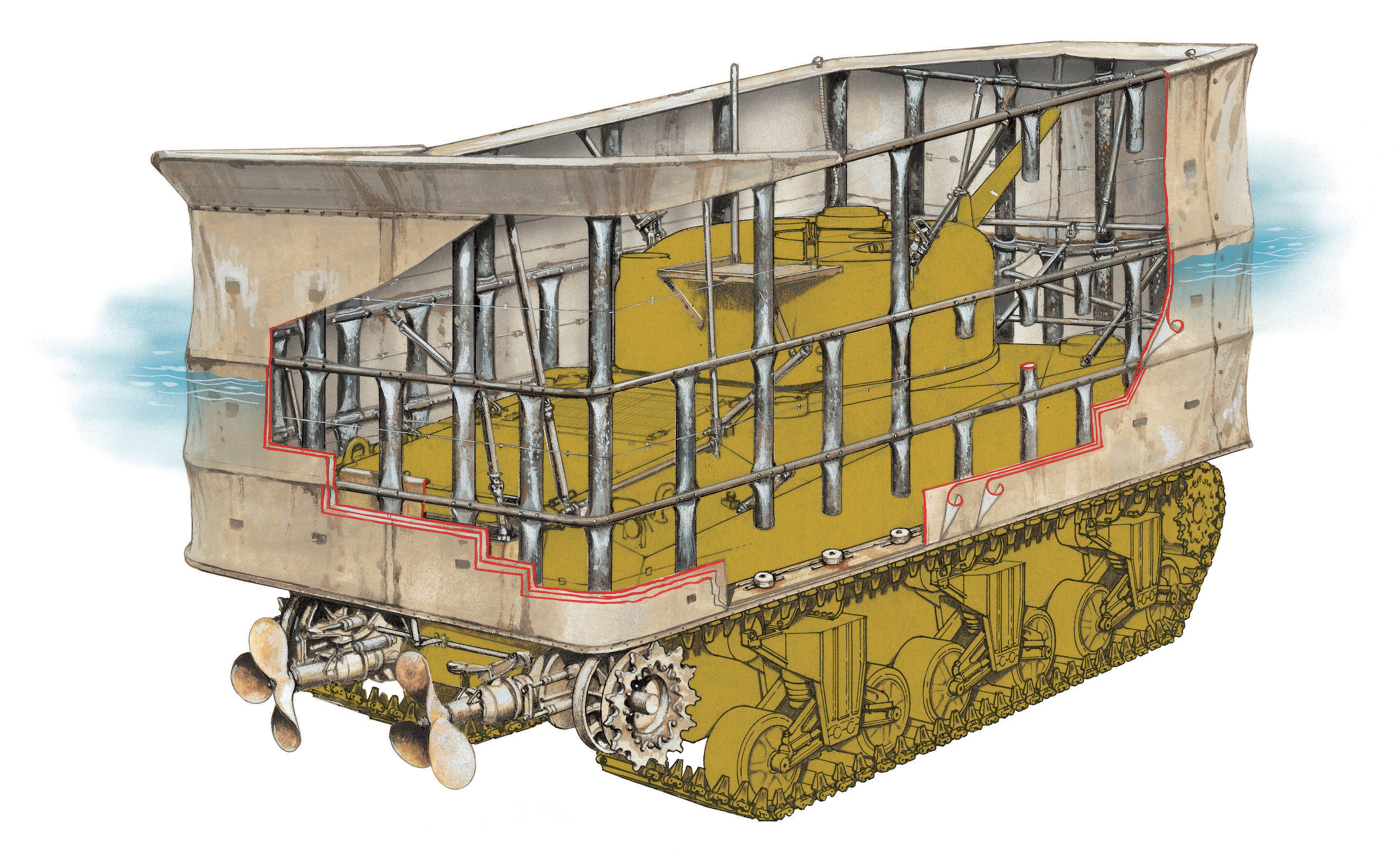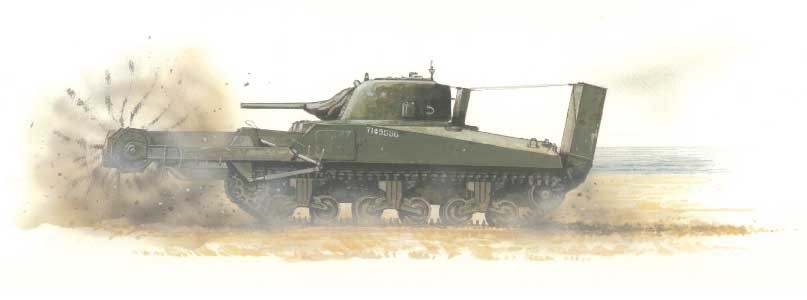Today marks the 75th anniversary of the D-Day landings, the largest seabourne invasion in history. In this series of blogs we will be looking at some of the weaponry and machinery utilized during the landings and the fighting that followed, starting with the Swimming Sherman and Sherman Crab Flail Tank.
Extract from New Vanguard 123: Swimming Shermans by David Fletcher
Artwork by Tony Bryan

The internal arrangements of a typical Sherman DD were identical, but for some minor details, to a conventional Sherman tank, a type that has been illustrated many times before. Here we intend to show mainly those special features that characterize the amphibious version. To begin with the screen itself, formed from rubberized canvas fabric: notice that the lowest level is three layers thick, the next two layers thick and the top just a single thickness. The screen is raised and supported in the first instance by large-diameter tubes of black rubber that are attached to special valves arranged all around the base and linked by a system of pipes, taking compressed air from two cylinders situated at the front of the tank. As the screen rises it takes up with it horizontal tubular frames that maintain the shape of the screen and are supported, when in position, by jointed struts attached to various parts of the hull. These are locked in place manually, but can be broken by hydraulic action when the screen comes down. On Sherman tanks the tracks are driven via sprockets mounted at the front, but on the DD version similar sprockets are attached to the idler wheels and are, in turn, driven by the motion of the tracks. Drive then proceeds by short shafts into bevel gearboxes situated low down at the back of the tank and from here drive passes through 90 degrees to another shaft ending in a simple ratchet clutch. When the propellers are lowered their shafts engage these clutches and drive continues though to the propellers. The propellers are also linked by a system of rods and a cross bar to a tiller arrangement located on the rear hull of the tank, and this tiller is within reach of a man standing on the special platform attached to the rear of the turret. From here the commander can see over the rim of the screen and steer the tank in the water. He has a binnacle compass on a post alongside him while the driver, who is also able to steer via a hydraulic linkage, can see through an extended periscope fitted to his hatch.
Extract from New Vanguard 139: Sherman Crab Flail Tank by David Fletcher
Artwork by Tony Bryan

The 22nd Dragoons put two squadrons ashore on D-Day. In Sword sector A Squadron landed with the British 3rd Infantry Division, while next door, on Juno, B Squadron was with 3rd Canadian Division. On occasions, where Sherman DD tanks were not available, the Crabs used their guns to silence the opposition. Otherwise it was a matter of clearing lanes across the beaches and through the dunes and then tackling the lateral roads. Formal operations were impossible under the circumstances; it was a time for quick and innovative thinking. A report, issued about a week after D-Day, singled out the Crabs for high praise. Not only did they manage to clear more than 50 per cent of the required exit lanes from beaches, they also used their guns to some considerable effect. It is worth saying that some senior officers were very doubtful about the value of flails on sandy beaches. They imagined that large craters would appear every time a mine was detonated, and would prove to be as big an obstacle as the mine itself; however, this does not seem to have been a serious problem. Our tank is shown storming ashore with the flail thrashing, but still sporting the polular Deep Wading Gear designed to help it through deep water; but this would be kettisoned at the first opportunity.
Continue reading through this series of blogs for a look at the Luftwaffe Mistel Composite Bomber and the German MG 42.

Comments
You must be logged in to comment on this post. Click here to log in.
Submit your comment